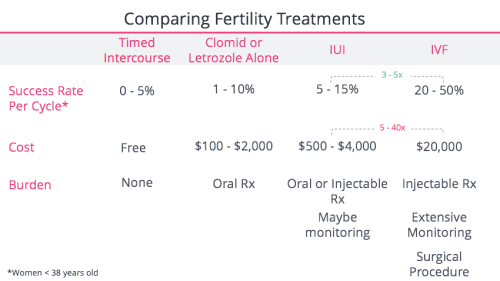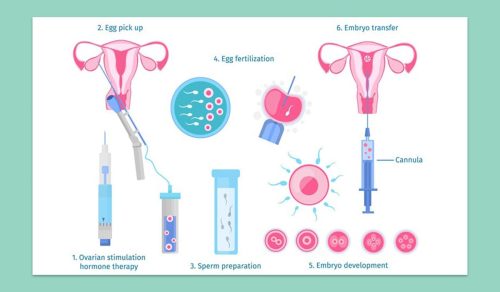How Much Does IVF Treatment Cost? Your Complete Guide to Understanding the Price Tag
In vitro fertilization (IVF) is a life-changing option for many people dreaming of starting a family. But if you’ve ever looked into it, you’ve probably noticed one big question keeps popping up: How much is this going to cost me? The truth is, IVF isn’t cheap, and the price can feel like a rollercoaster depending on where you live, what you need, and how your journey unfolds. Don’t worry—I’m here to break it all down for you in a way that’s easy to digest, with real numbers, practical tips, and a few surprises you might not have thought about.
Whether you’re just curious or seriously planning your next step, this guide will give you a clear picture of IVF costs in 2025, plus some insider advice to help you navigate the financial side of fertility treatment. Let’s dive in!
What’s the Average Cost of IVF in 2025?
IVF costs can vary wildly, but let’s start with the basics. In the United States, as of April 2025, a single IVF cycle typically ranges from $12,000 to $25,000. That’s the ballpark figure you’ll see most often, and it’s backed by recent data from places like the White House and fertility clinics across the country. But here’s the catch: that’s just the starting point. Depending on extras like medications, testing, or special procedures, the total can climb higher—sometimes much higher.
For example, a basic IVF cycle might include:
- Ovarian stimulation (to help your body produce eggs)
- Egg retrieval (a quick procedure to collect those eggs)
- Fertilization in a lab
- Embryo transfer (placing the embryo into the uterus)
Sounds simple, right? But each step comes with its own price tag, and things like your age, health, or even the clinic’s location can shift the numbers. In big cities like New York or Los Angeles, you might pay closer to $20,000-$25,000 per cycle. In smaller towns or rural areas, it could dip toward $12,000-$15,000. Crazy how geography plays a role, isn’t it?
Breaking Down the IVF Price Tag: What You’re Actually Paying For
To really get a handle on IVF costs, it helps to see where the money goes. Think of it like a grocery bill—there’s the main stuff, and then the extras that add up. Here’s a breakdown of what’s typically included in that $12,000-$25,000 range:
The Core IVF Cycle
- Monitoring (Ultrasounds & Blood Tests): $1,500-$3,000
Before and during the cycle, doctors keep a close eye on your hormones and egg development. This involves multiple appointments, and each one costs something. - Egg Retrieval: $3,000-$5,000
A minor surgery where a doctor collects eggs from your ovaries. It’s usually done under light anesthesia, which bumps up the price. - Lab Fees (Fertilization & Embryo Culture): $2,000-$4,000
This is where the magic happens—sperm meets egg in a petri dish, and the embryos grow for a few days. - Embryo Transfer: $1,500-$3,000
The final step, where the embryo is placed into your uterus. It’s quick but requires precision.
The Add-Ons You Might Not Expect
- Medications: $3,000-$7,000
These drugs stimulate your ovaries to produce more eggs. The cost depends on your dosage and how your body responds—some people need more, some less. - Anesthesia: $500-$1,000
For egg retrieval, you’ll likely be sedated. This isn’t always included in the base price. - Facility Fees: $1,000-$2,000
Clinics charge for using their space and equipment. It’s like a cover charge at a fancy club.
So, if you’re on the low end ($12,000), you might be skipping some extras or getting a discount. On the high end ($25,000), you’re probably including meds and every bell and whistle. But wait—there’s more to the story.
Hidden Costs: What’s Not in the Base Price?
One thing that catches a lot of people off guard is the stuff not included in that main number. These hidden costs can sneak up on you, so let’s shine a light on them:
- Pre-IVF Testing: $500-$2,000
Before you even start, you’ll need tests to check your fertility, hormone levels, and overall health. For couples, this includes sperm analysis too. - Genetic Screening (PGT): $2,000-$6,000
Want to test your embryos for genetic issues? Preimplantation genetic testing (PGT) is an option, but it’s pricey—think $200-$500 per embryo, plus lab fees. - Frozen Embryo Storage: $300-$1,000 per year
If you have extra embryos, you can freeze them for later. That’s an ongoing cost most people don’t think about upfront. - Donor Eggs or Sperm: $10,000-$45,000
If you need donor eggs (common for older women), the price skyrockets. Fresh donor eggs can hit $20,000-$45,000, while frozen ones might be $10,000-$15,000. Donor sperm is cheaper, around $500-$1,500 per vial. - Surrogacy: $50,000-$200,000
If you’re using a surrogate, you’re in a whole different league. This covers the surrogate’s compensation, legal fees, and medical costs.
Suddenly, that $12,000-$25,000 feels like just the tip of the iceberg, doesn’t it? For many, these extras turn IVF into a $30,000+ adventure—especially if it takes more than one try.
How Many IVF Cycles Will You Need?
Here’s a tough truth: IVF doesn’t always work the first time. Success rates depend on factors like age, health, and luck. According to the CDC, women under 35 have about a 50% chance of a live birth per cycle. Over 40? That drops to 10-15%. So, most people plan for 2-3 cycles, which means you could be looking at $24,000-$75,000 total.
Let’s put that in perspective:
- 1 Cycle: $12,000-$25,000
Best-case scenario—you’re done in one go. - 2 Cycles: $24,000-$50,000
Pretty common for younger couples or those with mild issues. - 3+ Cycles: $36,000-$75,000+
More likely if you’re older or facing complex challenges.
It’s a gamble, and that’s why understanding the full cost upfront matters so much. You don’t want to be halfway through and realize you’re out of funds.
Quick Quiz: How Many Cycles Might You Need?
Take a second to think about your situation:
- Are you under 35 with no major health issues?
✔️ You might need just 1-2 cycles. - Over 40 or dealing with conditions like endometriosis?
❌ Brace for 2-3+ cycles. - Using donor eggs or a surrogate?
✔️ Success rates might improve, but costs jump.
No pressure—just a little food for thought!
Does Insurance Cover IVF?
Now, let’s talk about everyone’s favorite topic: insurance. In the U.S., coverage for IVF is a mixed bag. As of 2025, 21 states plus Washington, D.C., have laws requiring some level of fertility treatment coverage. But here’s the kicker—only about half of those specifically mandate IVF. States like California, New York, and Illinois are more generous, while others, like Florida or Texas, leave it up to your employer’s plan.
- If You’re Covered: You might pay $0-$5,000 out of pocket per cycle, depending on copays and limits. Some plans cap coverage at $10,000 or 2 cycles.
- If You’re Not: You’re footing the full bill—$12,000-$25,000+.
Even with insurance, meds and extras like PGT often aren’t covered, so you could still owe thousands. Check your policy, call your HR department, or chat with your clinic’s billing team. It’s worth the effort to avoid surprises.
IVF Around the World: How Costs Compare
Thinking of traveling for IVF? Fertility tourism is a real thing, and prices vary globally. Here’s a snapshot based on 2025 trends:
| Country | Average IVF Cost (USD) | Notes |
|---|---|---|
| United States | $12,000-$25,000 | High quality, high cost |
| United Kingdom | $6,000-$10,000 | NHS may cover if eligible |
| India | $2,500-$5,000 | Affordable, growing popularity |
| Spain | $5,000-$8,000 | Top clinics, donor egg hub |
| Mexico | $4,000-$7,000 | Close to U.S., lower costs |
Travel can save money, but factor in flights, hotels, and time off work. A $5,000 cycle in India sounds great—until you add $2,000 in travel expenses. Plus, quality varies, so research clinics carefully. Spain and the UK are known for high standards, while cheaper options might cut corners.
What’s Driving IVF Costs in 2025?
Why is IVF so expensive? It’s not just greed—there are real reasons behind the numbers. Here’s what’s pushing prices up (or down) this year:
- Technology Advancements: New tools like AI-driven embryo selection or better freezing techniques improve success rates but cost clinics more to implement.
- Demand Surge: More people are delaying parenthood, and the LGBTQ+ community is increasingly using IVF. Higher demand can mean higher prices.
- Medication Prices: Fertility drugs aren’t getting cheaper. In fact, some have jumped 5-10% since 2023 due to supply chain issues.
- Policy Changes: A 2025 White House order pushed for more IVF access, which might lower costs long-term through subsidies—but we’re not there yet.
On X, people are buzzing about these trends. Posts highlight how surrogacy costs ($50K-$200K) dwarf basic IVF, showing the gap between “standard” and “premium” fertility options. It’s a hot topic—everyone’s feeling the pinch.
3 Ways to Save Money on IVF (That Actually Work)
IVF’s price tag can feel overwhelming, but there are ways to make it more manageable. Here are three practical strategies:
1. Shop Around for Clinics
Prices vary even within the same state. Call 3-5 clinics and ask for a detailed quote. Some offer package deals (e.g., $15,000 for 2 cycles) or discounts for paying upfront. One couple I heard about saved $4,000 by driving an hour to a smaller clinic.
2. Look Into Financing
- Clinic Payment Plans: Many offer 0% interest for 6-12 months.
- Fertility Loans: Companies like Future Family or CapexMD provide loans with rates as low as 5-10%.
- Grants: Organizations like Baby Quest or the Tinina Q. Cade Foundation give $2,000-$15,000 to qualifying families.
3. Consider Mini-IVF
This lower-dose approach uses fewer meds, dropping costs to $5,000-$10,000 per cycle. Success rates are slightly lower, but it’s a budget-friendly option for younger women or those with good ovarian reserve.
The Emotional Cost: What No One Talks About
Money isn’t the only thing IVF takes out of you. The emotional toll is huge, and it’s tied to the financial side more than you’d think. Imagine spending $20,000, waiting two weeks, and getting a negative test. It’s crushing. Studies from Stanford (2024) show couples with no insurance coverage are 3x more likely to drop out after one failed cycle due to stress and cost.
Here’s a tip: Build a support network. Join online forums, talk to friends, or see a counselor. One woman I read about said her IVF group on X was a lifeline—strangers cheering her on made the $40,000 journey bearable.
IVF Success Stories: Real Costs, Real People
Let’s get personal for a sec. Meet Sarah and Mike (names changed), a couple from Ohio. Sarah was 36, and after two years of trying naturally, they turned to IVF. Their first cycle cost $18,000—$12,000 for the procedure, $5,000 for meds, and $1,000 for tests. It failed. The second cycle, with PGT ($22,000 total), worked. Their daughter was born in 2024, and they spent $40,000 total. Worth it? “Every penny,” Sarah says.
Then there’s James, a single dad-to-be in California. He used donor eggs ($25,000) and a surrogate ($80,000), totaling $115,000 with extras. His son arrived in March 2025. “It’s insane money,” he admits, “but I’d do it again.”
These stories show the range—and the hope—behind the numbers.
Could IVF Costs Drop Soon?
Here’s something exciting: change might be coming. That 2025 White House order I mentioned? It’s pushing for more affordable IVF through federal support. Researchers at UC Berkeley estimate subsidies could cut costs by 20-30% in the next decade. Plus, low-cost IVF methods—like a simplified lab system trialed in 2023—could bring prices under $10,000 if they scale up.
On the flip side, rising healthcare costs and inflation might keep pushing prices up. It’s a tug-of-war, and 2025 is a pivotal year to watch.
Poll: What’s Your Biggest IVF Concern?
- A) The cost
- B) Success rates
- C) Emotional stress
- D) Finding the right clinic
Drop your answer in the comments—I’m curious!
3 Things You Haven’t Heard About IVF Costs
Most articles stick to the basics, but here are three angles you won’t find everywhere:
1. The Cost of “Failed” Embryos
Ever wonder what happens to embryos that don’t make it? If you’re doing PGT, you might pay $3,000 to test 6 embryos, only to find 2 are viable. That’s $500 per dud—a hidden expense that stings emotionally and financially.
2. Tax Breaks You Might Miss
In the U.S., IVF is tax-deductible as a medical expense if it exceeds 7.5% of your income. Spent $20,000 and make $100,000? You could deduct $12,500. Few people know this—it saved one couple I talked to over $3,000 in taxes.
3. The Ripple Effect on Your Life
IVF isn’t just a one-time hit. A 2024 study from Sweden found couples who spent $50,000+ on IVF delayed homeownership by 3-5 years. It’s not just your bank account—it’s your whole future.
Step-by-Step: Planning Your IVF Budget
Ready to take control? Here’s a simple guide to figure out your IVF costs:
- Assess Your Needs
- Age/health: Younger? Fewer cycles. Older? Maybe donor eggs.
- Partner’s fertility: Sperm issues might mean extra steps like ICSI ($1,500-$2,000).
- Get Quotes
- Call clinics for itemized estimates. Ask about discounts or multi-cycle deals.
- Check Insurance
- Dig into your plan. Look for “infertility” or “ART” coverage.
- Add Extras
- Meds: $3,000-$7,000
- Testing: $500-$2,000
- Storage: $300-$1,000/year
- Plan for Multiple Cycles
- Multiply by 2 or 3 to be safe. Better to overestimate than run dry.
- Explore Savings
- Loans, grants, or travel abroad—pick what fits.
Total it up, and you’ve got a roadmap. One family I know budgeted $30,000, spent $28,000, and had twins. Preparation pays off.
My Take: Is IVF Worth the Cost?
After digging into all this, here’s my two cents: IVF’s price is steep, but it’s not just about money—it’s about what you’re building. A family. A future. For some, $20,000 is a car. For others, it’s a child. The value depends on you. Data backs this up—studies show 80% of IVF parents say they’d do it again, cost and all.
But it’s not all rosy. The stress, the uncertainty, the what-ifs—they’re real. That’s why planning, saving, and support matter as much as the dollars.
Wrapping Up: Your IVF Journey Starts Here
IVF costs are a beast, no doubt about it. From $12,000 to $200,000, the range reflects how personal this process is. But now you’ve got the tools: a breakdown of every fee, ways to save, and a peek at what’s coming in 2025. Whether you’re dipping your toe in or ready to jump, you’re not alone—millions have walked this path, and millions more will.
Got questions? Thoughts? Share them below—I’d love to hear where you’re at. And if you found this helpful, pass it along. Someone out there might need it too.




